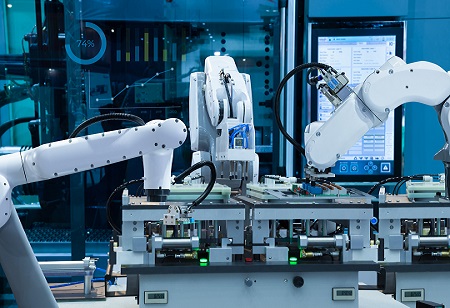Modern-day technology has given manufacturers a chance to change their processes. It’s not uncommon for industries to use innovations like advanced analytics, wearables, cloud, Internet of Things (IoT), mixed-reality devices, artificial intelligence (AI) and top-of-the-range mobility to increase production. These innovations enhance productivity among first-line workers, information workers, supply chains and the manufacturing enterprise.
In any manufacturing industry, employees are the greatest asset. Therefore, creating an environment that transforms operational technology (OT) and incorporates the existing IT infrastructure is crucial for manufacturing businesses.
Product engineers, plant floor operators and field service operators are some of the employees who rely heavily on IT innovations for analytics, design and efficiency. Creating a modern manufacturing workplace will require modernising the main production areas.
This article discusses eight steps to help manufacturing businesses modernise their workplace.
1.Operations
Investing in automation tools and machinery is critical to improving efficiency on the manufacturing floor. You should automate most processes and have skilled employees overseeing the operations. Automating will get the work done faster and reduce the workforce needed.
Human-machine collaboration can help maximise team productivity and refine incident resolution. This collaboration can also make problem-solving more efficient with sophisticated knowledge management, communication and collaboration.
2.Service
Modern manufacturing relies heavily on a service-oriented approach to business. However, with mixed-reality devices, technicians can better prepare themselves before a scheduled service. These devices allow them to perform test runs to identify the problem points before starting the work order. Also, companies must provide reliable customer service for their products and meet customer promises regarding maintenance and repair needs.
Service teams should be well-trained with the latest technologies so they can address any customer issues that arise. Employees in this field must also understand the importance of proactively helping customers, such as providing advice on product features or offering solutions to improve productivity. As a result, collaboration with remote experts can help them handle the machinery servicing.
In addition, equip your technicians with the modern equipment necessary for their work. With excellent service, companies can form relationships with customers built on trust and loyalty, ensuring success in the future.
